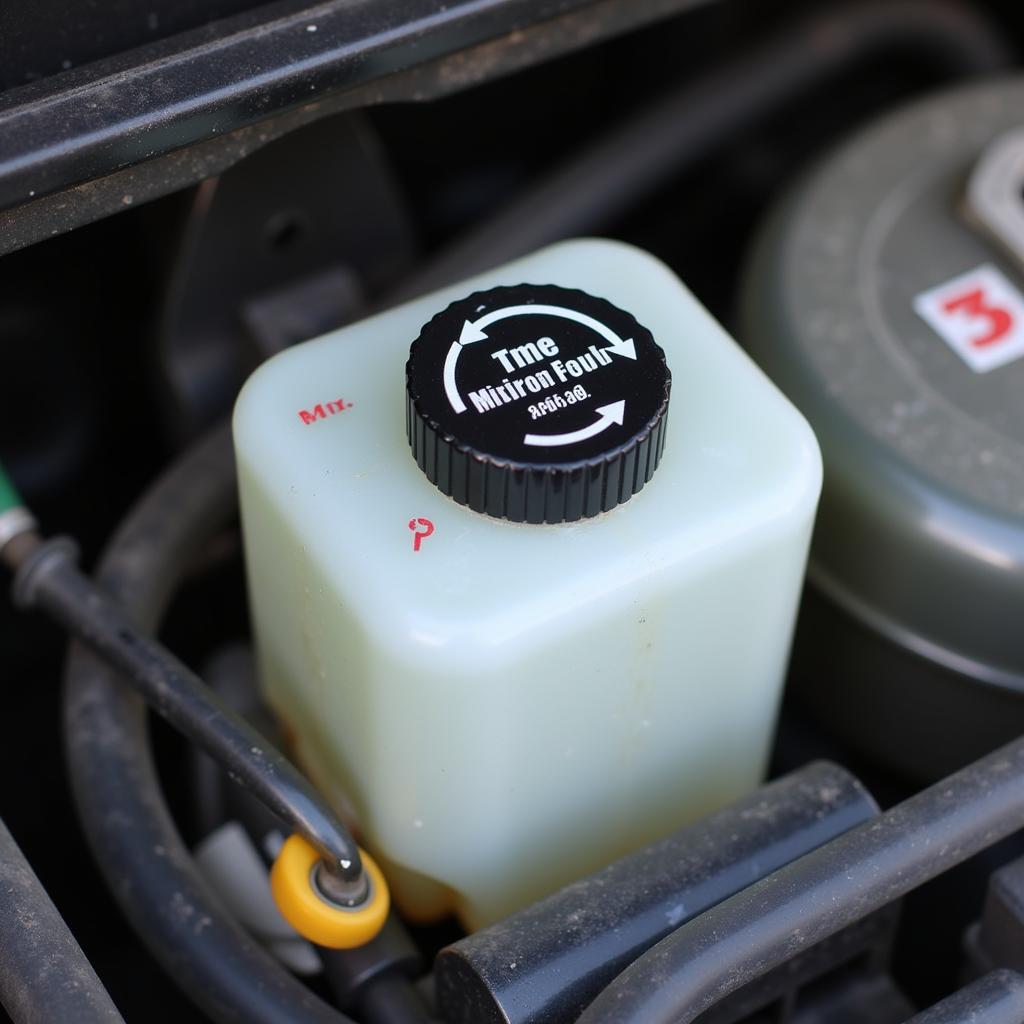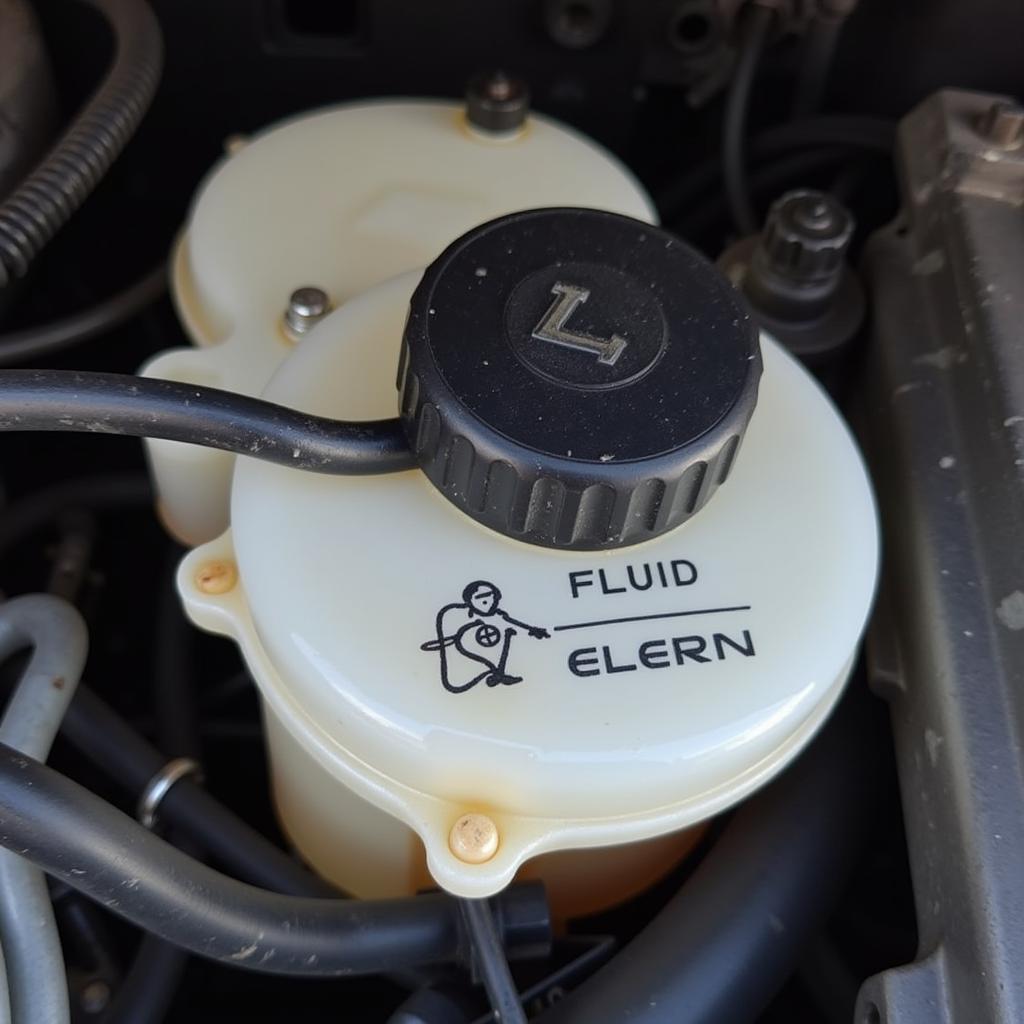A glowing brake warning light on your 1997 Range Rover 4.6 HSE is a cause for concern, but don’t panic. This common issue can often be diagnosed and resolved without extensive mechanical expertise. This comprehensive guide will walk you through the potential culprits behind that illuminated warning and provide practical steps for troubleshooting.
Understanding the Brake Warning Light
The brake warning light is your Range Rover’s way of communicating a potential issue within the braking system. While it can sometimes be triggered by a minor glitch, it’s crucial to treat it as a serious warning sign. Ignoring it could lead to compromised braking performance and potential safety hazards.
Common Causes of a Brake Warning Light on a 1997 Range Rover 4.6 HSE
Several factors can cause the brake warning light to illuminate on your 1997 Range Rover 4.6 HSE. Here’s a breakdown of the most common culprits:
-
Low Brake Fluid Level: This is often the most straightforward cause. Your Range Rover, like all vehicles with hydraulic brakes, relies on brake fluid to transmit force when you press the pedal. A leak or simply worn-out brake pads can lead to low fluid levels.
-
Worn Brake Pads: Brake pads naturally wear down over time. As they thin, the brake caliper pistons need to extend further to engage the rotors. This process consumes more brake fluid, potentially triggering the warning light.
-
Faulty Brake Pad Sensor: Many 1997 Range Rover 4.6 HSE models are equipped with brake pad wear sensors. These sensors are designed to activate the warning light when the brake pads reach a certain level of wear, signaling the need for replacement.
-
Brake Light Switch Malfunction: The brake light switch is responsible for activating your brake lights when you press the pedal. A faulty switch can disrupt the brake light circuit, sometimes triggering the warning light on the dashboard.
-
ABS System Issues: Your Range Rover’s Anti-lock Braking System (ABS) enhances safety by preventing wheel lockup during hard braking. However, issues with the ABS module, wheel speed sensors, or related wiring can trigger the brake warning light.
 Brake Fluid Reservoir
Brake Fluid Reservoir
Troubleshooting the Brake Warning Light: A Step-by-Step Guide
1. Check the Brake Fluid Level:
- Park your Range Rover on a level surface and engage the parking brake.
- Locate the brake fluid reservoir under the hood. Refer to your owner’s manual if needed.
- Carefully remove the reservoir cap, taking note of any warning labels.
- Inspect the brake fluid level. If it’s below the “MIN” mark, you’ll need to add more.
- Important: Use only the type of brake fluid recommended in your owner’s manual.
2. Inspect the Brake Pads:
- If possible, safely jack up your Range Rover and support it with jack stands.
- Examine the brake pads through the wheel spokes. Look for significant wear or if the pad material is close to the metal backing plate.
- If the brake pads appear excessively worn, they will need to be replaced.
 Worn Brake Pads
Worn Brake Pads
3. Check the Brake Light Switch:
- The brake light switch is typically located above the brake pedal arm under the dashboard.
- Depress and release the brake pedal while listening for a distinct clicking sound from the switch. If you don’t hear a click, the switch may be faulty.
4. Consult a Professional:
If you’ve checked the above components and the brake warning light persists, it’s strongly recommended to consult a qualified mechanic experienced with Range Rovers. Issues with the ABS system or other complex components require specialized diagnostic equipment and expertise.
"Ignoring a brake warning light can have serious consequences. Even if the issue seems minor, it's always best to err on the side of caution and have your Range Rover inspected by a professional."
- **John Davis, Senior Automotive Technician**Conclusion
Addressing a brake warning light on your 1997 Range Rover 4.6 HSE promptly is crucial for maintaining optimal braking performance and ensuring your safety on the road. While some causes can be diagnosed and even fixed with basic mechanical knowledge, don’t hesitate to seek professional assistance for more complex issues. Remember, when it comes to brakes, it’s always better to be safe than sorry.


